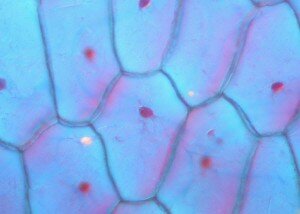 When was the last time anyone ever asked you about your endothelial health?
When was the last time anyone ever asked you about your endothelial health?
NEVER!
It’s estimated that there are approximately 60,000 miles of blood vessels in the adult body. These blood vessels include arteries, veins, and capillaries. They are all protected by a microscopic inner lining of endothelial cells, which are commonly called the endothelium. It’s important to note that these cells line the entire circulatory system from the inside of your heart all the way down to your smallest capillary. When added up, the volume of these endothelial cells would cover the surface area of 4 to 8 tennis courts depending upon the size of the individual. That’s amazing since the endothelium is only one cell thick and can’t be seen by the human eye.
Once discovered the endothelium was classified as an inert membrane whose primary function was to keep the blood in the circulatory system and out of the body’s tissues and organs. Research over the last 25 years has shown that your endothelium is an active, multi-functional organ that plays a vital role in metabolic, immunologic, and cardiovascular health. Your endothelium is now considered to be the single largest secreting organ in the body.
Endothelial health is so important that the 1998 Nobel Prize in Medicine was awarded to three American researchers who discovered how the endothelium converts the amino acid L-arginine into nitric oxide – the master signaling molecule of your entire cardiovascular system.
Endothelial Health and Its Life Enhancing Functions!
Because endothelial cells line every blood vessel they play an important role in the proper function of every organ in your body. The following is a list of the known functions of the endothelium. Each function plays an important role in endothelial health, cardiovascular health, and your overall wellness:
- Angiogenesis – The formation of new capillaries is called angiogenesis and is regulated in part by the endothelium. Endothelial health is extremely important in wound healing. It also plays a significant role in muscle creation and in the heart’s ability to develop collateral vessels. These collateral vessels can help lessen the impact of a blood vessel blockage in the heart by providing alternative routes for blood flow.
- Blood Flow – Your endothelium helps to facilitate blood flow. It does this by providing a smooth surface that inhibits platelet adhesion and clotting. It also tries to inhibit foreign substances from adhering to its cellular wall, which can lead to plaque formations. Large molecules like LDL (bad) cholesterol and/or toxic substances like nicotine damage the intercellular junctions between the endothelial cells allowing deposits to build up. This causes the smooth and flexible lining of your blood vessels to become rough and hard to directly impact endothelial health.
It’s these plaque formations that are at the heart of atherosclerosis. As this process continues over time, the deposits or plaques become larger which narrows the interior of the blood vessel making it harder for blood to pass through. This increases resistance to blood flow, which can cause your blood pressure to increase. The following factors can damage the endothelium and increase these formations: smoking, diabetes, hyperlipidemia, hypertension or high blood pressure, and inflammation. Elevated homocysteine levels have also been associated with premature atherosclerosis and can effect endothelial health and function.
Atherosclerosis was once thought to be irreversible but new studies clearly show that when the proper biochemical environment is provided the injured endothelium can return to its undamaged state. Proper supplementation with L-arginine, the precursor for nitric oxide, has been shown to diminish lesion formation, reverse endothelial dysfunction, and lead to improved endothelial health.
- Blood Clotting – The narrowing of your blood vessels also causes blood turbulence that can lead to the formation of blood clots. These blood clots, if large enough or if they pass through too narrow of an opening, can eventually lodge themselves in a blood vessel causing a blockage. When this happens in the heart we call it a heart attack. When it
happens in the brain it is called a stroke.
The endothelial cells produce a molecule called nitric oxide, which inhibits platelet adhesion, activation, secretion and aggregation, and promotes platelet disaggregation. This is extremely important in preventing blood clots in the vascular system to lessen the risk for heart attacks and strokes. It’s also a critical factor in sickle cell anemia to help prevent sickle cells from adhering to each other and clinging to the vascular walls. This helps to prevent blockages, which cause most of the pain and tissue damage associated with sickle cell anemia.
While using nitric oxide to prevent blood clotting, it’s interesting to note that the endothelial cells are also necessary for blood to clot. They synthesize the vitally important molecule called Factor VIII or von Willibrand’s Factor, which is essential for blood clotting. Without this molecule a person could bleed to death from a simple scratch.
- Blood pressure – Not only do the endothelial cells provide a dynamically-controlled structural barrier between the circulating blood and surrounding tissues and organs but they also produce signaling molecules that influence vasodilation and vasoconstriction. Vasodilation causes blood vessels to relax allowing for greater blood flow. This reduces blood pressure. Vasoconstriction causes blood vessels to tighten reducing blood flow and causing blood pressure to increase.
It’s currently believed that the endothelial cells are the controlling factor in the regulation of blood pressure. They produce both nitric oxide, which is the most potent vasodilator, and Endothelin-1 the most potent vasoconstrictor. The proper production of nitric oxide is fundamental to maintaining normal blood pressures, which means that endothelial health is critical to helping you maintain normal blood pressures.
- Specialized barrier function – Endothelial cells act as selective filters to regulate the passage of gases, fluids, and various molecules across their membranes. For example, in the brain and retina the endothelial cells are tightly linked together to create a barrier that only allows selective molecules to pass through it. In the liver, spleen, and bone marrow, the endothelial cells are loosely linked allowing for cellular trafficking between their intercellular gaps. However, in the kidneys, endocrine glands, and intestinal villi, the endothelial cells have a different type of selective permeability to allow for efficient filtering, secretion, and absorption based on that organ’s function.
Endothelial health is also critical to the proper function of your immune system. Your white blood cells or leucocytes are produced in the bone marrow. They travel through the blood stream where the endothelial cells facilitate their passage into your body’s tissue to allow them to destroy foreign agents or antigens. This gate-keeping role varies for each organ system but is dependent upon endothelial health and function.
Endothelial Health Is Critically Important!
It’s amazing that a simple lining of cells on the interior walls of your blood vessels could have such a profound affect on your
cardiovascular health and overall wellness. Yet that’s exactly the case with your endothelial cells. Endothelial health is critical to your health and your body’s ability to produce nitric oxide – the master signaling molecule of your entire cardiovascular system. When impaired, endothelial dysfunction has been linked to the following diseases:
- Diabetes
- Atherosclerosis
- Arteriosclerosis
- Heart Disease
- Stroke
- Hypertension
- Multiple Sclerosis
- Lupus
- Scleroderma
- Rheumatoid Arthritis
- ALS
- Parkinson’s
- Hypercoagulation of Blood, Thrombosis, Clotting Disorders
- Renal Failure
- Metabolic Syndrome including Abdominal Obesity and Insulin Resistance
- Sleep Apnea
- Glaucoma
That’s quite a list of diseases. Properly bringing in a good source of L-arginine, combined with good eating and lifestyle habits like those found in the Mediterranean diet, can help reverse damage to the endothelium and improve endothelial health. This means that your choices have a direct impact on endothelial health, which impacts cardiovascular health and all the diseases listed above.
It also means that you have the ability to prevent most of these diseases by focusing your attention on ways to improve your endothelial health and function. We’ll look at this in our next article especially as it applies to proper nitric oxide production.
Together we can work to save a million lives by concentrating on endothelial health!
Dan Hammer
Dan Hammer has a background in biology, chemistry, and exercise physiology. He used to run one of the largest health club operations in the Chicago area and has been helping people with their wellness issues for more than 25 years.
The information contained in this article is for general information purposes only and never as a substitute for professional medical advice or medical exam. The information about endothelial health has not been evaluated by the Food and Drug Administration and should not be used to diagnose, treat, cure or prevent and disease without the supervision of a qualified medical doctor.

 When people think of heart disease they rarely think about the endothelial cells that line all of your blood vessels. Most people usually associate heart disease with the heart or with problems in their circulatory system. While both of these can be major contributing factors in heart disease, for most people it is the health of their endothelial cells and their ability to properly produce
When people think of heart disease they rarely think about the endothelial cells that line all of your blood vessels. Most people usually associate heart disease with the heart or with problems in their circulatory system. While both of these can be major contributing factors in heart disease, for most people it is the health of their endothelial cells and their ability to properly produce